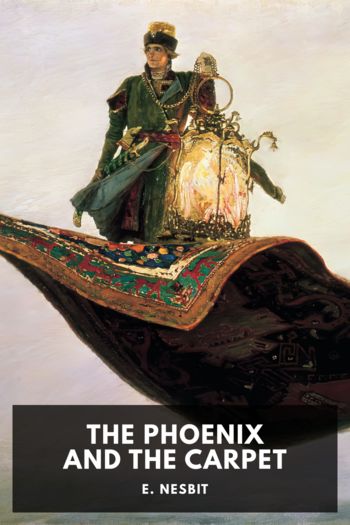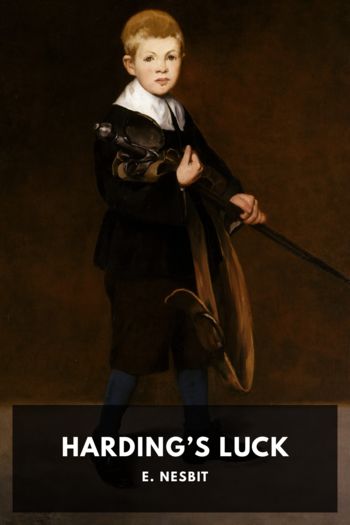The House of Arden by E. Nesbit (first ebook reader .txt) 📕

Description
Edith Nesbit was a popular children’s author of the late Victorian and early Edwardian eras in Britain. Though she was writing more than a century ago, her books nevertheless remain popular and are generally still in print.
The House of Arden was published in 1908. Like her other, perhaps better known tales, such as Five Children and It, the story takes quite ordinary children of the time and plunges them into fantastical adventures.
In this book, two children, with the interesting Saxon names of Edred and Elfrida, aged 10 and 12 respectively, discover that due to the death of a distant relative, young Edred is now Lord of Arden. The estate consists of not much more than a little money, a crumbling castle, and an attached house. An old retainer tells them of a legend regarding the Lord of Arden and a buried treasure. Naturally they are eager to locate the treasure, which may help them restore the castle. They discover a way to summon up the mascot of the House, a white mole or “mouldiwarp,” who enables them to travel back through time in search of the treasure.
Read free book «The House of Arden by E. Nesbit (first ebook reader .txt) 📕» - read online or download for free at americanlibrarybooks.com
- Author: E. Nesbit
Read book online «The House of Arden by E. Nesbit (first ebook reader .txt) 📕». Author - E. Nesbit
“Oh, don’t!” cried Elfrida; “it’s bad enough to quarrel when you don’t want to, but to set out to quarrel! Don’t!”
Edred didn’t. He kicked the dust up with his boots, and the two went back to the Castle in gloomy silence.
At the gate Edred paused. “I’ll make it up now if you like,” he said. “I’ve only just thought of it—but perhaps it’s three days from the end of the quarrel.”
“I see,” said Elfrida; “so the longer we keep it up—”
“Yes,” said Edred; “so let’s call it Pax and not waste any more time.”
VIII Guy FawkesThree days, because there had been a quarrel. But days pass quickly when the sun shines, and it is holiday-time, and you have a big ruined castle to explore and examine—a castle that is your own, or your brother’s.
“After all,” said Elfrida sensibly, “we might quite likely find the treasure ourselves, without any magic Mouldiwarpiness at all. We’ll look thoroughly. We won’t leave a stone unturned.”
“We shall have to leave a good many stones unturned,” said Edred, looking at the great grey mass of the keep that towered tall and frowning above them.
“Well, you know what I mean,” said Elfrida. “Come on!” and they went.
They climbed the steep, worn stairs that wound round and round in the darkness—stairs littered with dead leaves and mould and dropped feathers, and the dry, deserted nests of owls and jackdaws; stairs that ended suddenly in daylight and a steep last step, and the top of a broad ivy-grown wall from which you could look down, down, down; past the holes in the walls where the big beams used to be, past the old fireplaces still black with the smoke of fires long since burnt out, past the doors and windows of rooms whose floors fell away long ago; down, down, to where ferns and grass and brambles grew green at the very bottom of the tower.
Then there were arched doors that led to colonnades with strong little pillars and narrow windows, wonderful little unexpected chambers and corners—the best place in the whole wide world for serious and energetic hide-and-seek.
“How glorious,” said Elfrida, as they rested, scarlet and panting, after a thrilling game of “I spy,”—“if all these broken bits were mended, so that you couldn’t see where the new bits were stuck on! And if it could all be exactly like it was when it was brand-new.”
“There wasn’t the house when it was brand-new—the house like it is now, I mean,” said Edred. “I don’t suppose there was any attic with chests in when the castle was new.”
“There couldn’t be, not with all the chests,” said Elfrida; “of course not, because some of the clothes in the chest weren’t made till long after the castle was built. I believe grownups can tell what a broken thing was like when it was new. I know they can with bones—mastodons and things. And they made out what Hercules was like out of one foot of him that they found, I believe,” she added hazily.
“I’ve got an idea,” said Edred, “if we could get back to where the castle was all perfect like a model and draw pictures of every part. Then when we found the treasure we should know exactly what to build it up like, shouldn’t we?”
“Yes,” said Elfrida very gently. “We certainly should. But then we should have to know how to draw first, shouldn’t we?”
“Of course we should,” Edred agreed, “but that wouldn’t take long if we really tried. I never do try at school. I don’t like it. But it’s jolly easy. I know that. Burslem mi. always takes the drawing prize, and you know what a duffer he is. We might begin to learn now, don’t you think?”
Elfrida sat down on a fallen stone in the middle of the castle yard, and looked at the intricate wonderful arches and pillars, the crenulated battlements of the towers, the splendid stoutness of the walls, and she sighed.
“Yes,” she said, “let’s begin now—”
“And you’ll have to lend me one of your pencils,” said he, “because I broke mine all to bits trying to get the parlour door open the day you’d got the key in your pocket. Quite a long one it was. You’ll have to lend me a long one, Elf. I can’t draw with those little endy-bits that get inside your hand and prick you with the other end.”
“I don’t mind,” said she, “so long as you don’t put it in your mouth.”
So they got large sheets of writing-paper, and brown calf-bound books for the paper to lie flat on, and they started to draw Arden Castle. And as Elfrida tried to draw everything she knew was there, as well as everything she could see, her drawing soon became almost entirely covered with black-lead.
They had no indiarubber, and if you drew anything wrong it had to stay drawn. When you first begin to draw, you draw a good many things wrong, don’t you? I assure you that nobody would have known that the black and grey muddle on Elfrida’s paper was meant to be a picture of a castle. Edred’s was much more easily recognised, even before he printed “Arden Castle” under it in large, uneven letters. He never once raised his eyes from his paper, and just drew what he thought the front of the castle looked like from the outside. Also he sucked his pencil earnestly—Elfrida’s pencil, I mean—and this made the lines of his drawing very black.
“There!” he said at last, “it’s ever so much liker than yours.”
“Yes,” said Elfrida, “but there’s more in mine.”
“It doesn’t matter how much there is in a picture if you can’t tell what it’s meant for,” said Edred, with some truth. “Now, in mine you can see the towers, and the big gate, and the windows, and the twiddly in-and-outness on top.”
“Yes,” said Elfrida, “but … well, let’s do something else. I don’t believe we should





Comments (0)